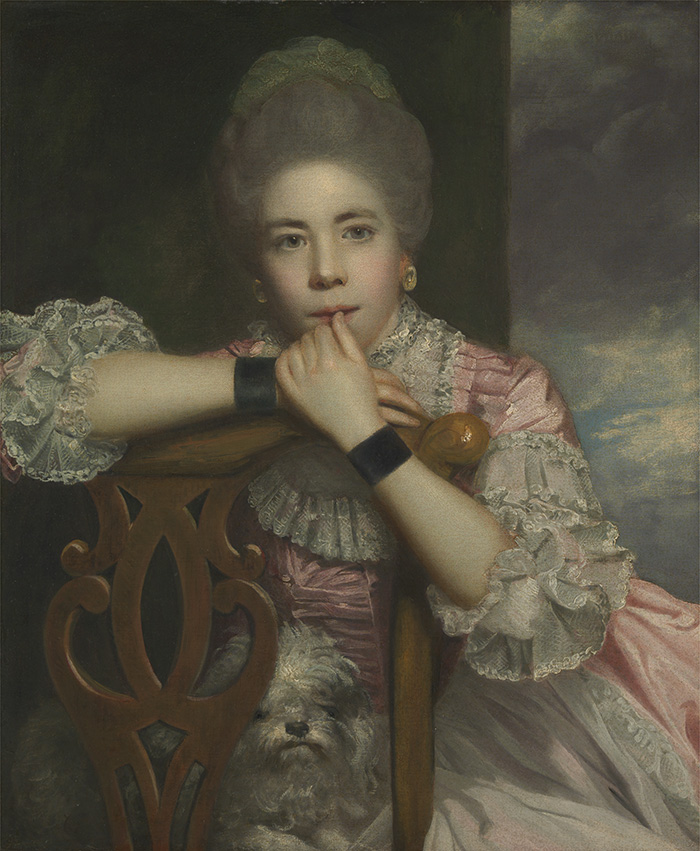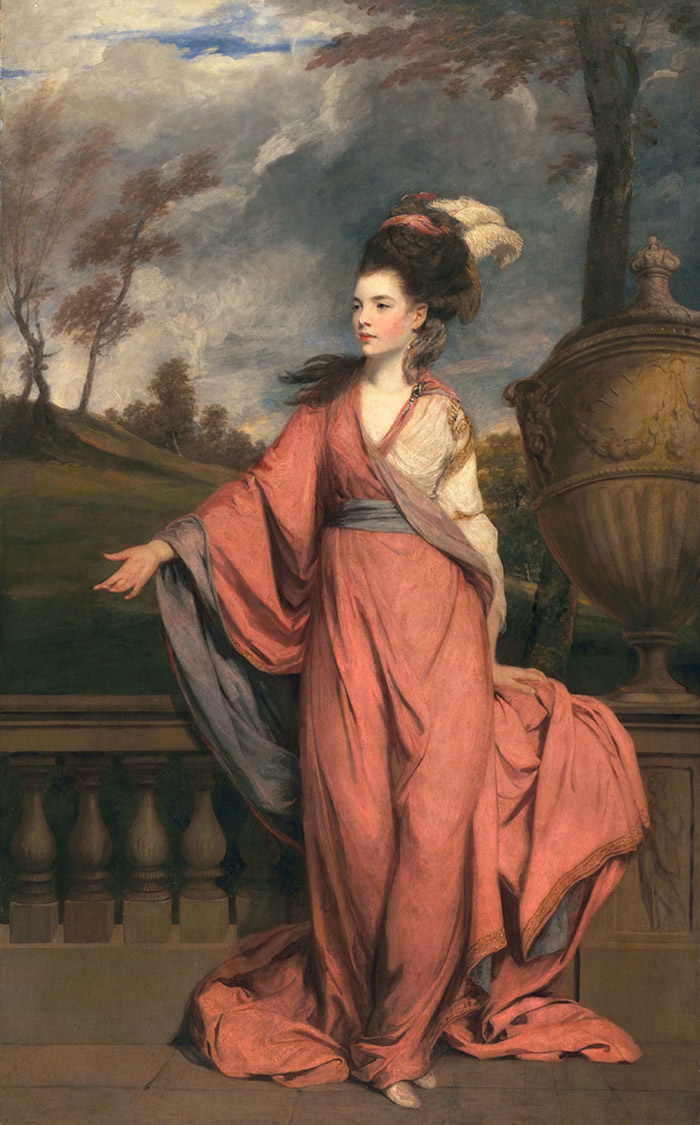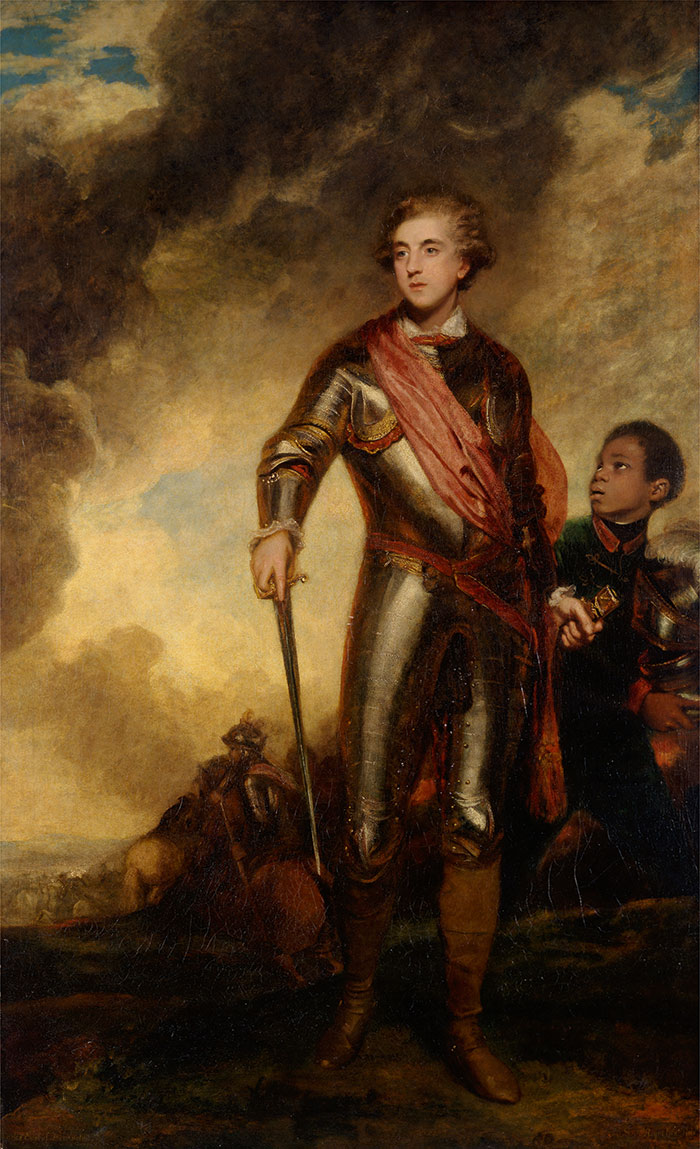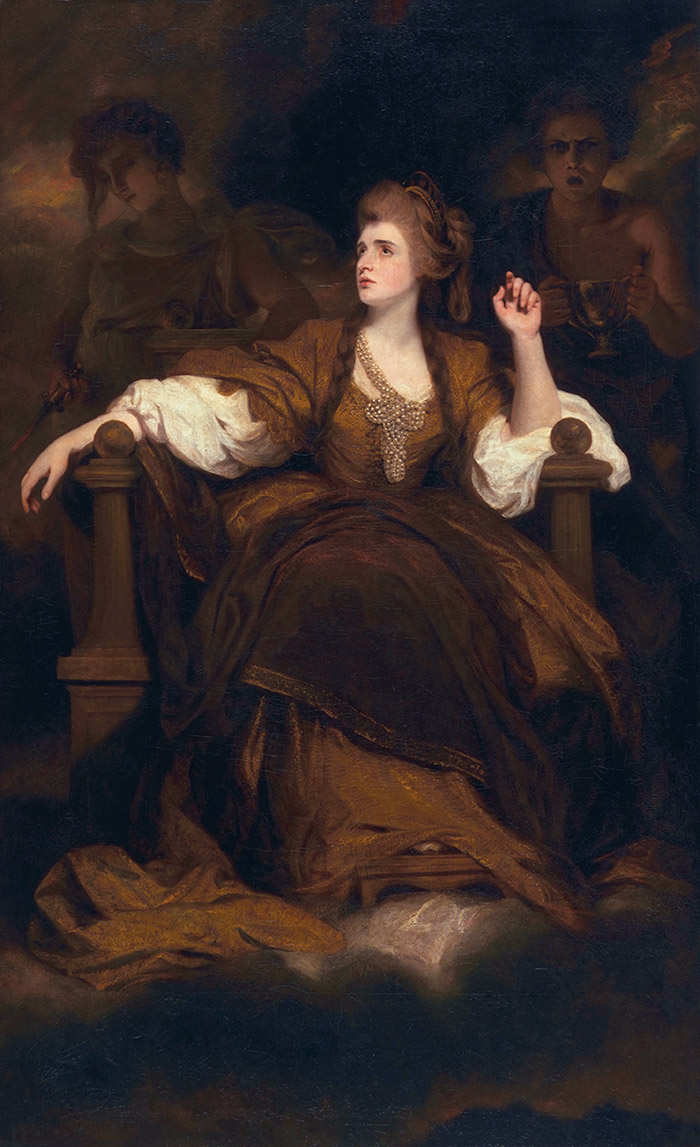The Huntington’s blog takes you behind the scenes for a scholarly view of the collections.
Portraiture as Interaction
Posted on Mon., Dec. 7, 2015 by and

Joshua Reynolds, Mrs. Abington as Miss Prue in “Love for Love” by William Congreve, 1771, oil on canvas. Yale Center for British Art, Paul Mellon Collection.
Portraiture implies an interaction between the sitter and spectator. It often rehearses an interaction between two or more protagonists and regularly focuses on the interaction between the people represented and their surroundings. Portraits—of husbands and wives, sisters and brothers, friends, and colleagues—are often depicted by artists and arranged by curators so as to interact with each other in meaningful ways.
Due to an upsurge of scholarly interest in the interactive nature of portraiture, we are convening “Portraiture as Interaction: The Spaces and Interfaces of the British Portrait,” a two-day international conference inspired by the important collections of British portraits at The Huntington and the Yale Center for British Art. The conference will take place at The Huntington on Dec. 11 and 12.
At the Yale Center for British Art, portraiture is a key strand of the collection, from the Tudor period onwards, although it would be fair to say that we especially associate portraiture with what British historians call the “long 18th century” (roughly 1688 to 1815). This also happens to be the period in which we share close connections with The Huntington, home to an impressive collection of British Grand Manner portraits.

Joshua Reynolds, Jane Fleming, later Countess of Harrington, ca. 1778–79, oil on canvas. The Huntington Library, Art Collections, and Botanical Gardens.
A pair of images—one at The Huntington, one at Yale—perfectly represents this connection: two full-length portraits by Joshua Reynolds (1723–1792) depicting a couple who were betrothed and then married. Reynolds painted the wealthy heiress Jane Fleming in 1778–79, just before her marriage, in a pose reminiscent of the famous Apollo Belvedere statue; then, in 1782, he painted her husband, Charles Stanhope, Earl of Harrington, and his young servant, upon his return (with Lady Harrington) from Jamaica as a military hero, after he helped defend Britain’s largest slave colony from French invasion.
Although made several years apart, the two paintings suggest a series of relationships—and interactions—between sitters, between artist and sitter, and portrait to portrait. They raise questions about display and beholding, ownership and collecting—both historically, at the time of their making, and now—in their respective homes in San Marino and New Haven, their permanent resting places established through the tastes and interests of two American collectors, Henry Huntington and Paul Mellon.

Joshua Reynolds, Charles Stanhope, third Earl of Harrington, and a Servant, 1782, oil on canvas. Yale Center for British Art, Paul Mellon Collection.
It was this series of relationships that prompted the development of our conference on portraiture—taking the traditions of British Grand Manner portraiture as our starting point, but moving beyond the long 18th century to consider wider-ranging issues and conceptual questions about the interactive dynamics of portraiture. The conference participants include curators, academics, and artists representing many fields: medieval studies, decorative arts, collections history, political history, photography, and film.
The conference talks also range across time, space, and media: from the illustrated page as an interactive space, to the curation of private rooms and public exhibitions; the scene of the sitting and the performance of painting; the portrait as a commercial prospect, and its appearance in photography, film, and Hollywood movies. Participants will spend time in The Huntington’s collections, looking at works and discussing their interactivity within the spaces of the galleries.
We hope that this conference—jointly organized by The Huntington, the Yale Center for British Art, and the Paul Mellon Centre for Studies in British Art—will open up new ways of thinking about the history and workings of British portraiture up to the present.

Joshua Reynolds, Sarah Siddons as the Tragic Muse, ca. 1783–84, oil on canvas. The Huntington Library, Art Collections, and Botanical Gardens.
For program and registration information, click here.
Martina Droth is deputy director of research and curator of sculpture at the Yale Center for British Art.
Mark Hallett is director of studies at the Paul Mellon Center for Studies in British Art.